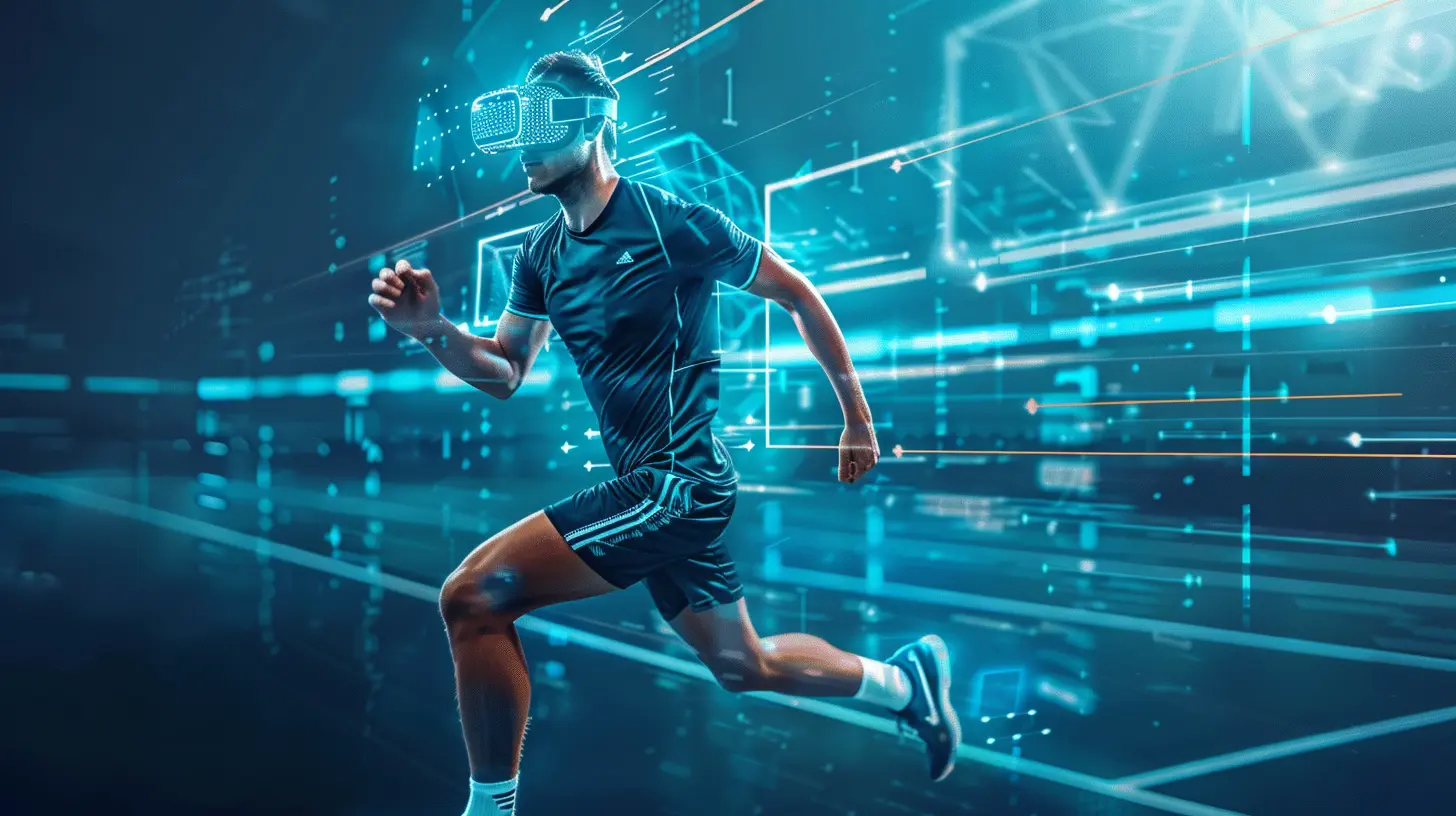How Virtual Coaching is Changing the Way Athletes Train
16 July 2025
Think about how we used to train just a decade ago. You’d head to the gym, run into your coach (if they weren’t busy), maybe get 45 minutes of feedback, and head home. Fast forward to today, and training has gone digital—big time. Virtual coaching is more than a trend—it’s transforming how athletes prepare, perform, and evolve.
Whether you're a weekend warrior, a high school athlete eyeing college scholarships, or a pro looking for an edge, virtual coaching is probably already on your radar. But what’s really going on behind the scenes? Why are more athletes turning to screens instead of whistles and clipboards?
Let’s break it down, one pixel at a time.
The Digital Shift: Why Virtual Coaching is Gaining Ground
First off, let’s talk about the obvious: convenience. Athletes no longer need to commute to a gym or wait for a coach’s availability. Got an internet connection and a smartphone? Boom—you’ve got a coach in your pocket.But it’s not just about saving time. Virtual coaching brings a whole new level of personalization and flexibility. It's changing the game because it's built around YOU, not the other way around.
Coaches can now track your progress in real-time, adjust your workouts remotely, and even analyze videos of your form while sipping coffee halfway across the world. Pretty wild, right?
The Rise of Smart Tech in Training
At the heart of virtual coaching is technology—gadgets and apps that are as valuable as a pair of running shoes nowadays.Wearables & Trackers
Think Apple Watch, Whoop Strap, Garmin, or Fitbit. These babies monitor everything from your heart rate to your sleep patterns. Virtual coaches use this data to tweak your training load, recovery time, and performance strategy like a pit crew fine-tuning a race car.Video Analysis Tools
Remember the days when you’d rely on your coach’s memory to fix your posture or swing? Now, apps like Coach’s Eye or Dartfish let you upload real-time footage, slow it down, and get precise feedback—not in days, but minutes.AI-Powered Coaching Apps
Artificial Intelligence isn't just for sci-fi fans. It’s now coaching athletes. Platforms like Freeletics, Juggl, and Future use AI to craft personalized training plans that adapt based on your progress.Is it perfect? Not quite. But it's getting scary good at understanding what your body needs.
How Virtual Coaching Brings the World to Your Fingertips
One of the coolest parts of virtual coaching? Access.You’re no longer limited by geography. Want to train with an Olympic-level coach based in Europe while living in a tiny town in Kansas? You totally can.
Breaking Barriers for Amateur Athletes
For many up-and-coming athletes, affording top-tier coaching used to be a pipe dream. Virtual platforms have democratized access to elite knowledge without breaking the bank.It's like replacing one-on-one private tutoring with Netflix binge-worthy documentaries—only these are tailored to your exact needs.
Building Global Communities
Virtual coaching platforms often come with community features—forums, group chats, live Q&As. You’re not just training alone in your garage. You’re part of a tribe that spans continents. You swap tips, celebrate wins, and get through plateaus together.That kind of global support? Priceless.
Personalized Training—For Real This Time
We've all been there. Buy a workout program online, and it's cookie-cutter fluff. But virtual coaching today? It’s deeply personalized.Data-Driven Decisions
Groggy from poor sleep last night? Your coach (or AI-based platform) knows and might reduce training intensity. Crushed a PR today? You’ll get a recovery-focused plan tomorrow.This kind of responsive coaching wasn't even possible five years ago at scale.
Real-Time Feedback and Adjustments
Virtual coaching often includes real-time video feedback. Some platforms even let athletes livestream their workouts to coaches for instant critique.That’s like having a personal trainer spotting you 24/7—minus the awkward breathing down your neck.
Are Virtual Coaches Replacing In-Person Coaches?
Let’s pump the brakes here.Is virtual coaching better than in-person? Not necessarily—it’s just different. It’s a toolkit, not a total replacement.
There are still things virtual platforms struggle with—like the human touch. Reading subtle non-verbal cues. The encouragement in a coach’s tone. The feel of a pat on the back after a tough set.
But virtual coaching isn’t trying to replace coaches; it’s enhancing them. Many in-person coaches now use tech to increase their effectiveness. It’s a combo move—a powerful blend of intuition and information.
The Advantages That Can’t Be Ignored
Let’s hit pause and list out the real-world perks athletes are getting from virtual coaching.1. Flexibility
No more missing sessions because of travel or time zone clashes. Your coach travels with you—virtually.2. Accountability
Most apps and platforms track everything—when you train, how hard you push, even when you slack off (yikes). And that constant feedback loop keeps athletes on their toes.3. Cost-Effectiveness
Virtual coaching can often cost a fraction of traditional personal training. It’s a win for your wallet without a drop in quality.4. Customized Progress Tracking
Charts, graphs, session logs. You’ll know exactly what’s working—and what’s not—with visual feedback that’s easy to understand.Challenges Still in the Game
Of course, it’s not all smooth sailing. Virtual coaching has a few flaws that need ironing out.Lack of Physical Presence
Sometimes, you need a coach right there. To spot you physically. To push you when you're mentally done. That kind of in-the-moment motivation can’t always be duplicated through a screen.Tech Troubles
From app crashes to poor internet connections, sometimes the tech gets in the way more than it helps. And let’s be honest, not all athletes are tech-savvy.Motivation Slumps
Training solo via screen can sometimes get lonely. You can start strong but fade fast without someone physically present to hold you accountable.What's Next? The Future of Virtual Coaching
So, where do we go from here? Straight into virtual reality and beyond.Virtual Reality (VR) and Augmented Reality (AR)
Imagine putting on a headset and standing "next" to your virtual trainer in a simulated Olympic stadium for your track session. Feels like sci-fi? It's not far off.Companies like Oculus and Multis are already exploring ways to gamify athletic training using VR and AR systems. You’ll be immersed in realistic environments that keep your head in the game—quite literally.
Smarter AI Coaches
We're talking AI that anticipates muscle fatigue or overtraining before you even feel it. These future coaches will be like the Jarvis to your Iron Man—guiding, protecting, and strategizing.Integration with Daily Life
Soon, your fridge might know when you're carb-loading. Your fitness app might schedule workouts based on your work calendar. It’s less about balancing life and training—and more about seamlessly syncing them.Final Thoughts: Will You Go Virtual?
If you're still clinging to only in-person training, no judgment. But ignoring virtual coaching could mean falling behind in a fast-evolving game.Virtual coaching isn’t just for tech geeks or pro athletes—it’s for anyone who wants smarter, more flexible, cost-effective training that meets them where they are.
And let’s face it: when the playing field is leveling out thanks to technology, the athletes who adapt fastest will come out ahead.
So, are you ready to make the switch—or at least plug in for a test drive?
all images in this post were generated using AI tools
Category:
Sports InnovationsAuthor:

Umberto Flores
Discussion
rate this article
1 comments
Harley Carrillo
Virtual coaching is revolutionizing training by making expert guidance accessible to all athletes. Embrace this innovative approach, push your limits, and watch your potential soar as you achieve your fitness dreams!
August 13, 2025 at 4:01 AM

Umberto Flores
Thank you for your insightful comment! Virtual coaching truly democratizes access to expert training, empowering athletes to unlock their full potential.


